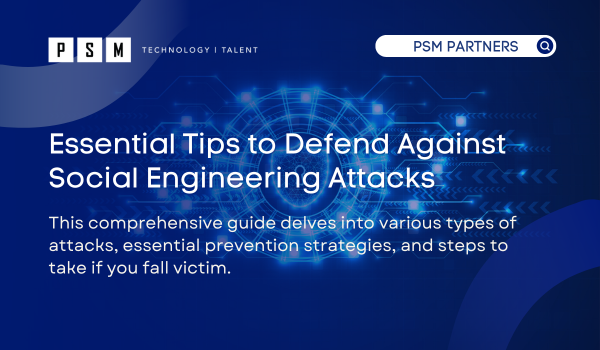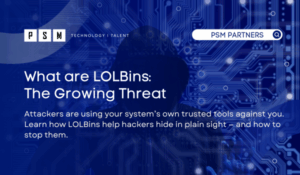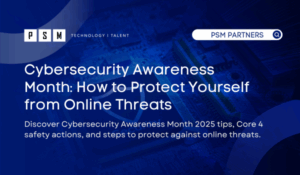Table of Contents
ToggleIn today’s interconnected world, social engineering attacks pose a significant threat to individuals and organizations. These deceptive tactics exploits human error to manipulate individuals into disclosing sensitive information, enabling cybercriminals to infiltrate networks and commit identity theft. Whether online or in person, most attacks prey on trust and exploit psychological manipulation to achieve their malicious goals. As technology advances, so do the methods employed by attackers. In this comprehensive guide, we’ll explore the various types of social engineering attacks, essential prevention strategies and steps to take if you fall victim to an attack. By understanding the nature of these threats and implementing proactive measures, you can better protect yourself and your digital assets from harm.
What is a Social Engineering Attack?
Social engineering attacks can occur both online and in person and involve manipulating individuals to divulge personal information that can be used to infiltrate computer networks or steal identities. These attacks can be as simple as inquiring about the software you use or the name of your network administrator. Offenders often pose as coworkers, repair personnel, IT staff or other outsiders with seemingly legitimate reasons for needing the information. This method allows criminals to acquire sensitive data without the need to breach complex operating systems directly. They employ various manipulative techniques to gain trust and deceive unsuspecting victims to willingly surrender their information. The prevalence of social engineering attacks has increased online, as it is easier to send a convincing email than to physically impersonate someone from a company. As these attacks become more sophisticated, it is crucial to remain vigilant and informed to protect your digital self from falling victim to a social engineering attack.
Understanding the Various Types of Social Engineering Attacks

Social engineering attacks come in many forms, each leveraging different tactics to exploit human vulnerabilities. These deceptive methods are designed to manipulate individuals into divulging sensitive information, often without their awareness.
Baiting entails setting up an enticing trap, such as presenting a USB stick apparently offering freebies, but loaded with disguised malware software. This tactic preys on curiosity and the human desire for free or valuable items, luring unsuspecting individuals into compromising their security. Once the malware-infected USB stick is plugged into a computer, it can grant attackers access to sensitive data, install ransomware or take control of the entire operating system.
Pretexting uses fabricated scenarios to capture the target’s attention, an example could be posing as a coworker from HR or the Financial department. This could be a way in trick you to give away sensitive information such as passwords, date of birth or bank account details.
Phishing attacks typically involve emails or text messages, frequently disguised as communications from banks asking recipients to click a link that leads to a fake website where they unwittingly provide login details. As one of the most popular social engineering attack types, phishing scams aim to manipulate recipients into sharing sensitive information and downloading malicious software.
Vishing and Smishing are variations on this theme, with vishing using phone calls to impersonate IT help desks or other trusted entities to extract data, while smishing relies on deceptive text messages enticing you to click a link.
Contact spamming and Email hacking are used to gain access to someone’s email or social media accounts to exploit their contacts, often by sending messages requesting money or directing them to malicious websites.
Farming versus hunting describes different approaches attackers take to build relationships with their victims. Farming involves developing a long-term relationship to gather information gradually, which is riskier for the attacker but can yield more extensive data if successful. Hunting, on the other hand, seeks immediate gains through quick interactions.
Understanding these social engineering tactics is essential in recognizing and defending against most social engineering attacks. By staying informed and vigilant, you can better protect yourself and your personal information from such attacks.
Tips to Prevent Falling Victim to Social Engineering Attacks

According to Homeland Security, safeguarding against social engineering attacks requires vigilance and proactive measures. Here are some essential tips to shield yourself from falling victim to these deceptive social engineering techniques:
Be Wary of Unsolicited Contact: Exercise caution when receiving unexpected communications from individuals requesting internal organizational data or personal information.
Avoid Providing Personal Information Over the Phone: Refrain from sharing any personal or organizational details during phone conversations, especially with unfamiliar callers.
Verify Website URLs: Pay close attention to website URLs and ensure they match legitimate sources. When in doubt, contact the company directly to confirm authenticity.
Install and Maintain Security Software: Protect your devices by installing and regularly updating antivirus software, firewalls and email filters.
Additional strategies to avoid social engineering attacks include:
Verify the Source: Check the authenticity of emails by comparing them to previous correspondence from the known sender. Hover over links to preview their destinations and scrutinize for spelling errors.
Confirm Identity: Verify their identity, ask security questions or cross-reference with organizational directories.
Use Spam Filters: Implement robust spam filters to minimize the influx of potentially malicious emails.
Assess Realism: Evaluate the credibility of claims made in communications. Question the likelihood of scenarios presented, such as unexpected financial windfalls or urgent requests for personal details.
Avoid Rushed Decisions: Remain calm and deliberate when faced with pressure tactics. Take time to assess situations logically and avoid hasty responses.
Ensuring device security is also crucial in preventing social engineering attacks:
Keep Software Updated: Regularly update antivirus and malware software, along with system software and firmware, to mitigate vulnerabilities.
Avoid Admin Mode: Refrain from running devices in administrator mode, as it increases susceptibility to unauthorized access.
Utilize Strong Passwords: Implement unique passwords for each account and enable multi factor authentication for enhanced security.
Stay Informed: Stay informed about new cybersecurity threats and adjust security measures as needed.
Lastly, exercise discretion when sharing personal information online, as oversharing on social media platforms can provide attackers with valuable insights. By adhering to the essential tips outlined by Homeland Security and incorporating additional strategies to fortify your defenses, you can significantly reduce the risk of falling victim to deceptive tactics. Ensuring device security, staying informed about emerging threats, and exercising discretion when sharing personal information online are vital components of a robust defense strategy.
Recovering from a Social Engineering Attack: Essential Steps to Take
If you find yourself a victim of a social engineering attack, swift action is crucial. Begin by reporting the incident immediately to relevant authorities. Contact your bank to monitor account activity and potentially freeze or secure your accounts. Changing all passwords promptly is essential to prevent further unauthorized access. Additionally, it’s vital to report the attack to the police and file a detailed report with the Federal Trade Commission to document the incident and aid in any investigations or legal proceedings.
Empowering Your Defense: Comprehensive Cybersecurity Solutions from PSM Partners
In today’s digital landscape, the threat of social engineering attacks looms large, necessitating robust defenses to safeguard confidential information against potential harm. Understanding the various forms of social engineering tactics and implementing proactive measures are paramount in fortifying your digital defenses. At PSM Partners, our comprehensive cybersecurity services are tailored to meet the unique needs of your organization. From managed security solutions to round-the-clock monitoring and response, we provide the expertise and support you need to defend against evolving threats and protect your digital assets. With PSM Partners by your side, you can navigate the complex cybersecurity landscape with confidence, knowing that your systems are fortified against social engineering attacks.
Related Insights
What are LOLBins: The Growing Threat
Cybercriminals are becoming increasingly clever at turning everyday tools into...
Read MoreUpcoming Cybersecurity Events in 2026
As technology continues to evolve at a rapid pace, staying...
Read MoreCybersecurity Awareness Month: How to Protect Yourself from Online Threats
Every October, Cybersecurity Awareness Month serves as a reminder of...
Read MoreCybersecurity Trends in Higher Education: What Colleges and Universities Need to Know
Key Takeaways: Your Cybersecurity Questions Answered Higher Education Is Now...
Read MoreAbout the Author

Marisa Maiella
I'm a dynamic Marketing Coordinator with a passion for crafting compelling marketing campaigns and engaging content. Known for my creativity and strategic approach, I am committed to fostering brand growth and enhancing engagement through innovative marketing strategies.





